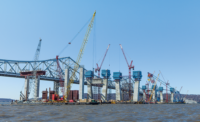The idea of workplace diversity is nothing new, but its progress in the engineering and construction world is, well, diverse. Some firms take a minimal approach, adhering to federal rules regarding minority and disadvantaged businesses or anti-discrimination laws. Others cite diversity and inclusion as a core value and business imperative.
“We are in an ongoing crisis with regard to diversity in engineering,” claims Donna Riley, associate professor of engineering at Smith College, Northampton, Mass., and author of “Engineering and Social Justice.” “We've created a lot of programs that have been successful at both recruitment and retention,” she says. “These efforts are focused on helping underrepresented people find, be attracted to and survive in a system that is still not inclined to be welcoming.”
Some industry segments, such as environmental and industrial, have improved, says Daryl Chubin, director of the Center for Advancing Science & Engineering Capacity, Washington, D.C. Others, such as civil-engineering college departments, have lagged in comparison. “Engineers have been late in engaging the challenge—to their detriment,” he says. “You certainly see this in the composition of engineering faculties. Students want to see people who look like them in the institution.”
Technical skills are no longer enough, Chubin says. “The so-called soft [interpersonal, communication] skills are the skills of the 21st century. Engineers must be able to solve problems with a variety of people,” he says.
In 2008, the American Society of Civil Engineers published “Diversity by Design,” a guide that encompasses a swath of diversity issues. Experts say public entities are well ahead of diversity inclusion efforts in the private sector and higher education.
At San Diego International Airport, the diversity push includes a discussion on transgender issues. “We continue to stretch ourselves,” says Jeff Lindeman, the airport's director of human resources. “When we first introduced lesbian, gay, bisexual and transgender [LGBT] issues to the mix, there was pushback. People have deeply held beliefs. But we are not asking them to give up their beliefs.”
Rather, it's about not imposing those beliefs on others in the workplace, says Thella Bowens, a black woman who is the CEO of the city's airport authority. “Often we say and do what's politically correct in the appropriate environment, but I believe we don't always walk the walk,” she says.
Robert Van Cleave, chairman and CEO of Balfour Beatty Construction, concurs. “The industry is not where it needs to be,” he says. “It's not malice, but we've meandered.” He adds, “Our clients are more diverse than ever. The talent pool that we all must draw from is our main advantage. If you only go after a percentage of that pool, you're handicapping yourself.”
Balfour Beatty is one of six engineering-construction firms rated as most diverse among Fortune magazine's 2011 list of Best Companies To Work For. Diversity criteria include percentages of minorities and women, a non-discrimination policy that includes sexual orientation and domestic partner benefits.
Design firm Kimley-Horn and Associates, listed as a diverse firm on Fortune's 2010 list, doesn't meet the last two policy criteria. “We don't condone discrimination on any non-merit factor,” says Barry Barber, HR director. “For our base policy, we take a minimalist approach. Various clients require that we contractually state that we will not discriminate based on many things, and we adhere to those.”










Post a comment to this article
Report Abusive Comment